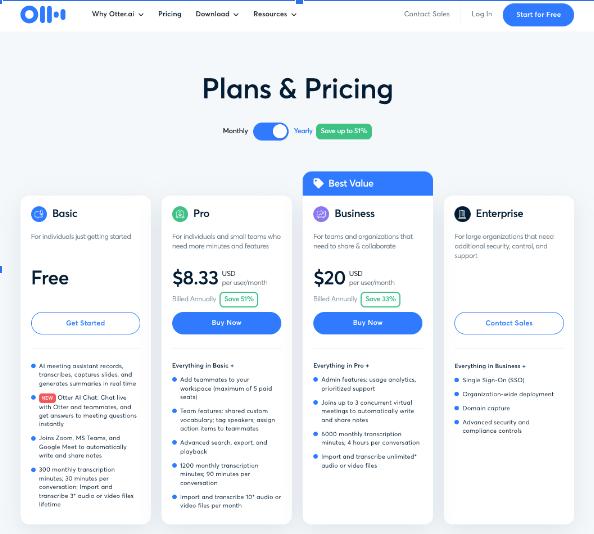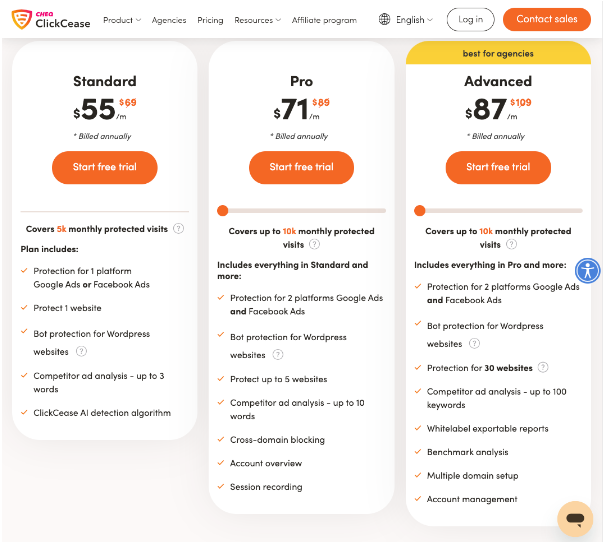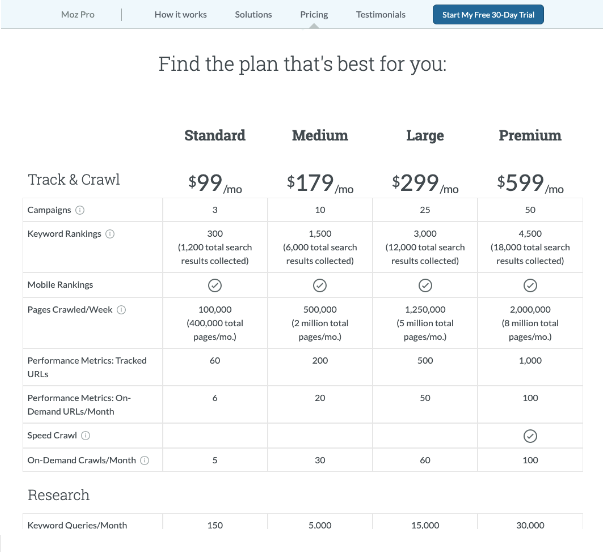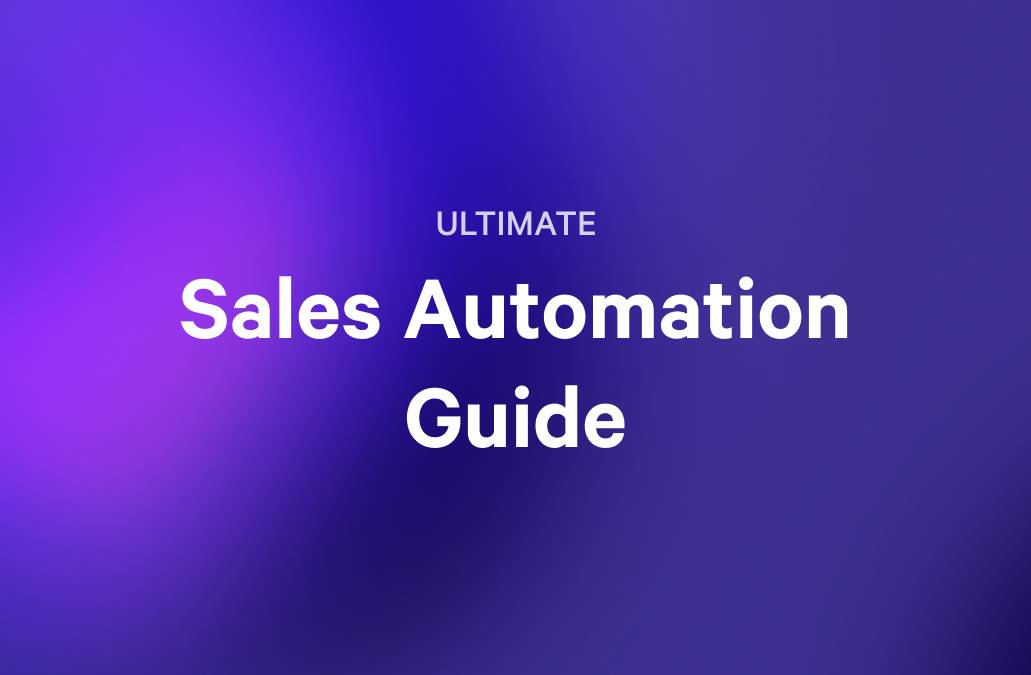How often do you change your pricing? Nearly four of every five SaaS companies change their pricing at least once yearly - with good reason.
The economic landscape of many businesses is in constant flux. As the market changes, you need to be sure that you’re offering the best deal available to your customers, with a margin that still allows you to thrive and grow.
But this need to adjust your pricing to reflect market forces should be balanced against the importance of pricing consistency for establishing trust and rapport with your customers. If they can’t be sure how much they’ll pay, how can they commit?
Disagreements over price are also one of the primary reasons for slower sales processes and delays in B2B sales, with 35% of reps listing price objections as the primary challenge during sales conversations.
A tiered pricing structure allows us to create a transparent and consistent pricing framework that customers can easily understand. When coupled with effective presentation and materials, a tiered pricing strategy provides additional resilience to market forces - and if you need to adjust your prices, you can spread the disruption by changing one tier at a time.
You can also use different tiers to maximize your selling opportunities, by more closely meeting the needs of different types of customers.
This article will help you understand if tiered pricing fits your organization best. We’ll review some classic tiered pricing strategies and tactics, and show you how to implement this approach step-by-step before we finish with some classic tiered pricing examples to help guide your implementation.
When is tiered pricing the right fit for your GTM strategy?
There honestly aren’t many go-to-market situations that don’t suit a tiered pricing strategy. But if you’re still not convinced it’s right for your product or service, here are some clues that you’ll need tiers.
- You’ve got different customer segments (or you’re looking to expand your audience). For example, if you’re selling the same B2B software to freelance consultants, small business owners, and large agencies, you’ll probably need a different pricing tier for each customer segment.
- You’re selling a product with solid upselling or ongoing sales opportunities. Suppose you’re building a longer-term customer relationship, with add-ons and additional services that can be supplied as the customer comes to rely on your offering. In that case, tiered pricing is a great way to structure and formalize this progression.
- Your product or service is complex, with multiple use cases. If you’re selling the software equivalent of the Swiss Army knife, with a range of different tools packaged together, then as long as you can provide a basic package which meets the customer’s primary need, there’s plenty of scope to use tiers to market your additional tools or features.
- There isn’t a widely accepted, industry-standard price point for your offer. This one’s about buyer expectation - a generally accepted cost for your product can make your pricing strategy a much simpler affair (there’s probably still room for a tiered strategy, though, depending on the other factors involved). However, if your product is relatively new and undefined, customers are likely to bring a much more varied set of price expectations.
A tiered pricing strategy can help you anticipate this broader range of possible price points, and achieve greater sales performance across all your customer segments.
Tiered pricing strategies
It’s essential to choose a tiered pricing strategy that’s matched to your product, your business goals, and your market conditions. There are four main categories of tiered pricing strategy, which can be used either in isolation or in combination with each other, depending on the nature of the transactions involved. It’s more common now, particularly in SaaS, to see tiered pricing strategies that draw on two or three of these models.
Volume-based pricing
This strategy uses bulk-buying discounts to drive overall sales. The individual unit price decreases as the number of units purchased increases - so it works out cheaper (per unit) if the customer buys more. Volume pricing is popular with certain physical products, especially when sold ‘wholesale’ - the discount offered to the customer directly reflects the economies of scale enjoyed by the buyer, earlier in the supply chain.
Ideal markets for volume-based pricing: raw materials, foodstuffs, relatively low-tech electronics.
Usage-based pricing
Much like volume-based pricing, this is a tiered pricing strategy that can be applied when the service or product is fairly simple, without many features or much variation between units. However, usage-based pricing increases according to how much of a given resource a customer uses without discounts for additional units purchased. This strategy is ideally deployed where resources are finite, and production can’t be scaled up past a set point.
This strategy can also be used with feature-based pricing to provide a more nuanced pricing model with more variation between tiers.
Ideal markets for usage-based pricing: broadband, IT, and telecom services, such as cloud storage, mobile phone packages, or IPv4 address blocks.
Feature-based pricing
This approach is arguably the most flexible tool to build your tiered pricing. If your offer is sufficiently complex to allow a range of optional add-ons and extras, you can craft a ‘premium’ experience - or reduce product features, stripping back to a bare-bones ‘basic’ package (or even a freemium model). The added flexibility makes it easier to nudge customers toward higher price packages, using features as incentives.
One important note on feature-based pricing: Never offer a package that only partially addresses your customer’s objective, as you risk losing buyer trust for recommending an option that fails to solve the basic customer need, challenge, or aspiration. Even a freemium tool needs to provide a basic level of functionality.
Ideal markets for feature-based pricing: B2B software tools and services, high-end/boutique/specialist electronic equipment.
Subscription-based pricing
Another ‘sliding scale’ style model, much like volume-based pricing - but in this instance, the variable that reduces your cost per unit is time. The price of the individual unit (e.g., a month’s worth of access to the service) reduces as the length of the contract increases.
The seller benefits from the guaranteed income, and improved revenue forecasting provided by the longer contract and incentivizes the customer to provide this. Customers can often access further discounts by paying the entire value of the contract upfront, providing even greater stability of revenue for the company.
Ideal markets for subscription-based pricing: SaaS businesses, entertainment, or news services.
Tiered pricing tactics
There are whole libraries devoted to books about pricing tactics - much of this material draws on the well-loved and oft-quoted behavioral economics theories espoused by Kahneman, Thaler & Sunstein, Cialdini, et al.
Pricing is a conveniently quantifiable metric that lends itself well to academic research, so it’s no surprise that many of these tactics come equipped with solid statistical evidence to support them.
It’s worth noting that a little tactical pricing can go a long way - your customers aren’t stupid, so overt manipulation is unlikely to win you any new business (particularly in B2B transactions, where your customers are probably as savvy about pricing as you are). Building a good relationship and a satisfying buyer experience is ultimately far more important than how you implement pricing tactics.
So with this ‘less is more’ mentality front and center, let’s look at some of the more popular pricing ‘nudges’ you’re likely to encounter.
‘Good/better/best’
A time-honored tactic, also known as ‘the Goldilocks effect,’ ‘the Center Stage effect,’ or ‘The Law of Three.’
Three-tiered pricing works according to the idea, backed by research, that when presented with three options - ‘good/better/best’ - people are automatically drawn to the one in the middle. Providing more than three options can be counterproductive or overwhelming to the potential customer, which leads to having them make a purchase less likely.
In B2B sales, your “good” price point provides an easy entry for price-conscious prospects. Conversely, your “best” price point is set very high with features that hold appeal to top customers, but at a price point not likely to appeal to the majority.
Your second tier, the “better” price, is the optimum price point where you hope to sell most of your products. Through natural curiosity, prospects look beyond the “good” price and realize there’s less value than the other options.
However, the “best” price is just beyond their budget, so they look favorably at the “better” price (carefully adjusted with the right combination of features) as an affordable and reasonable value.
More often than not, this results in a sale that reflects a higher entry point, plus positions these new customers to be upgraded to the next tier as they gain experience with your service.
The Decoy effect
First demonstrated in 1982 by Professor Joel Huber at Duke University, the Decoy effect flips the conventional wisdom of the Law of Three, by deliberately reducing the appeal of the middle option, pushing the buyer towards the higher-priced offer.
Dr Huber’s study found that this tactic reduced buyer indecision, by making the two remaining options more attractive.
This tactic should be used sparingly and with caution. A ‘cost-neutral’ decoy to emphasize the value of the other options isn’t unethical. Still, it’s an overt tactic that can be easily detected by the careful observer - or worse, chosen in error by a careless buyer.
The Bandwagon effect
Groupthink is a powerful motivator. And it’s not always an illogical choice to follow the crowd. In his celebrated book, ‘Influence,’ Robert Cialdini cites drivers' behavior in traffic. In many instances, it’s wise to copy the driver's behavior in front - slowing down is an obvious example, but consider your first reaction if everyone in the lane ahead of you starts indicating to change lanes. Would you change as well? You might assume the lane is closed or there is an accident or impediment ahead.
The Bandwagon effect is often seen in tiered pricing presentations - usually above the middle option, where you’ll find the preferred package labeled as ‘recommended’ or ‘most popular.’ As humans, we take verbal, conversational, or purchasing cues from others, and since buyers may be new to your product or service, telling them which package is most popular will often influence their choice.
How do you implement tiered pricing?
Pricing is one of the most critical factors in your GTM strategy, and shouldn’t be rushed. The following steps also apply to many of the other elements of your strategy.
Research and assess your target market. Who are your customers? Does your product meet their needs? Do their needs change over time, or according to their circumstances? What are their current expectations of the price of your product? If you don’t know the answers to these questions, consider asking customers or prospects. This can take the form of interviews, sitting in on sales calls or demos, or even sending a short survey,
Clarify your business goals. What are you looking to achieve? Are you expanding into new markets, increasing sales, or boosting profits?
Work out your costs. Whether your prices directly reflect your expenses, or if they’re based on the value your product provides for the customer, you’ll still need a full breakdown and forecast of your research, development, manufacturing, shipping, marketing, materials, labor, administrative, capital and operational expenditure before you can make a sale.
Choose a structure. Using the information gathered in these first three steps, you should be able to decide whether you’ll be using a feature-based, subscription-based, volume-based, or usage-based pricing strategy (or a combination of these strategies). You should also have a good idea of which tactics will suit your target audience and their personas.
Set prices. As we pointed out in the introduction, this isn’t a ‘set it and forget it’ scenario. Look at these go-to-market pricing options as a first draft - you’ll be revising them (along with your sales proposals and presentations) soon enough.
Adjust your prices. Listen to your customers. Assess their buying signals. Run the numbers. Work your margins and try again.
Examples of effective tiered pricing in SaaS
Otter.AI

The market leader in transcription software attracted some criticism when they cut back on the features available on the basic plan last year - critics would do well to note that Otter is merely following in the footsteps of almost every successful SaaS that’s ever offered a free plan. Their free offer is still a powerful, user-friendly tool (albeit with time limitations).
This tiered pricing strategy neatly combines subscription-based, feature-based, and usage-based pricing, allowing Otter to cater precisely to the different segments of their customer base.
By retaining a single user per account for the three lowest tiers, they ensure that organizations and agencies are more likely to engage with their sales reps for a personalized account experience at the Enterprise tier.
ClickCease

One of the leading click fraud protection solutions, ClickCease’s tiered pricing strategy is predominantly usage-based (along with the feature-based elements that are common to most SaaS offerings). There’s also a hint of the decoy effect, with a deliberate de-emphasis on the middle option, which only provides coverage for up to five websites.
This push towards the higher tier is accompanied by an appeal from the ‘bandwagon’ with a ‘best for agencies’ banner across the top of the highest ‘premium plan’ tier.
Moz Pro

SEO behemoth Moz Pro breaks with the ‘Law of Three’ formula, to offer four packages, separated by fairly steep price increases, based around a volume-based pricing strategy (with some feature differentiation included).
You’d be forgiven for immediately wondering which tier is the decoy. However, both of the middle packages seem to be positioned to offer value for money. Given Moz’s market position as a premium SEO toolkit, it’s more likely that each of the four tiers represents a different market segment, allowing Moz to cater more precisely to SMBs, freelance SEO consultants, and various sizes of marketing agencies.
Pssst: Check out our guide on marketing agency pricing models

Even though there are four, not three, packages on offer, there’s still an element of the ‘good/better/best’ tactic at work here - Moz only offers a free trial on their medium tier, pushing users towards the package that represents the best fit for the majority of their users. If you were in any doubt that this was where most of Moz’s sales happen, they’ve added a ‘most popular’ social proof tag as well.
Frequently asked questions
Who uses tiered pricing?
Businesses with multiple customer segments use tiered pricing. This is because each segment requires different price points, different features, or different levels of service. It’s also popular with businesses that sell in large quantities or companies with a subscription-based business model.
What is tiered pricing in B2B?
Tiered pricing in B2B allows companies to sell to businesses of different sizes, or with different business needs. Large and small businesses can use the same product or service in diverse ways, so a tiered pricing model lets you meet these different sets of needs more effectively.
What is the difference between fixed and tiered pricing?
In sales and marketing, fixed pricing is only suitable for selling simple products that don’t vary from vendor to vendor, in very mature markets. The more complex the offer, the more likely it is tiered pricing strategies should be used.
Level up your pricing strategy, and communicate your worth
Your pricing strategy is one of the most critical pieces of communication between seller and buyer. Done right, it’s the perfect opportunity to define the value of your offer and meet the needs of a diverse group of customers - with huge implications for your revenue.
Qwilr is set up so your sales team can add tiered pricing directly to your sales proposal templates. Book a demo with our team to see how you can customize our tiered pricing model templates and demonstrate the value and flexibility of your offer, combining the strategies and tactics outlined above in a sophisticated interactive sales proposal.
About the author

Brendan Connaughton|Head of Growth Marketing
Brendan heads up growth marketing and demand generation at Qwilr, overseeing performance marketing, SEO, and lifecycle initiatives. Brendan has been instrumental in developing go-to-market functions for a number of high-growth startups and challenger brands.


